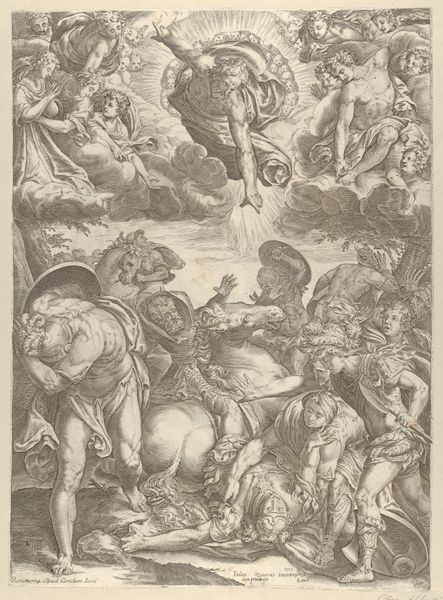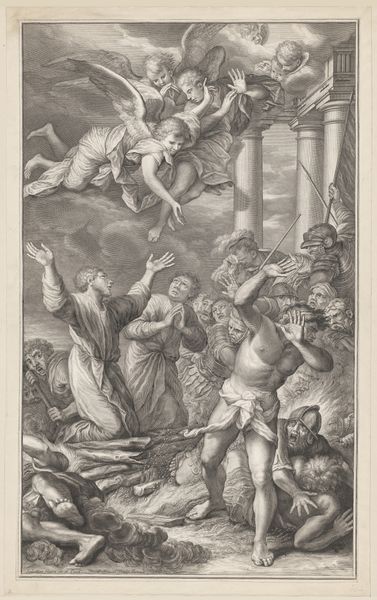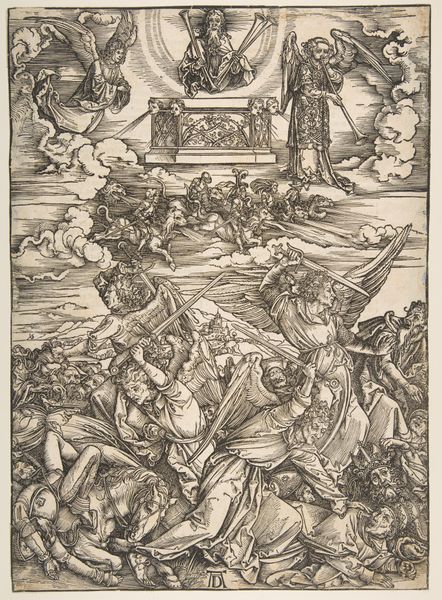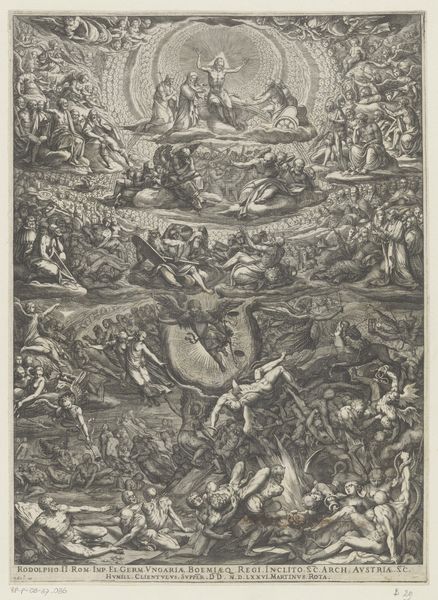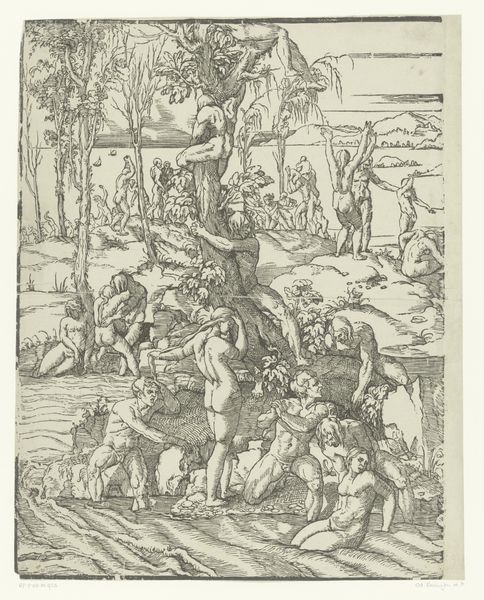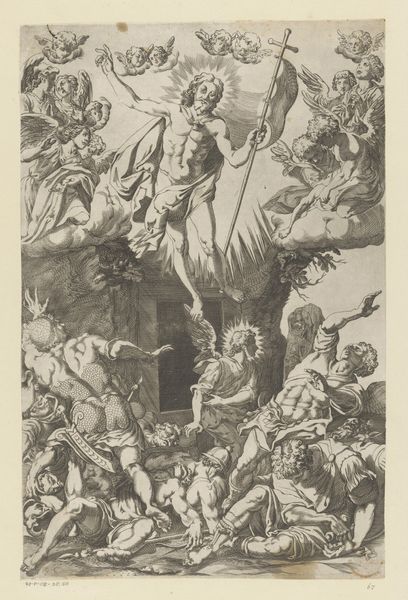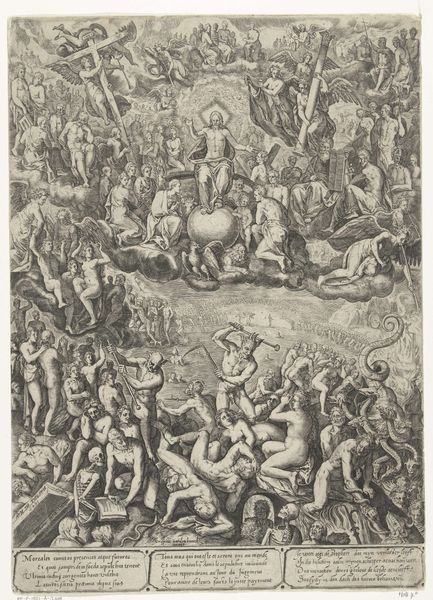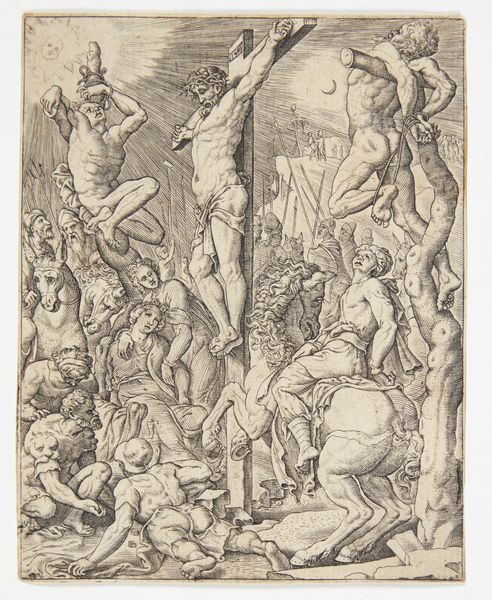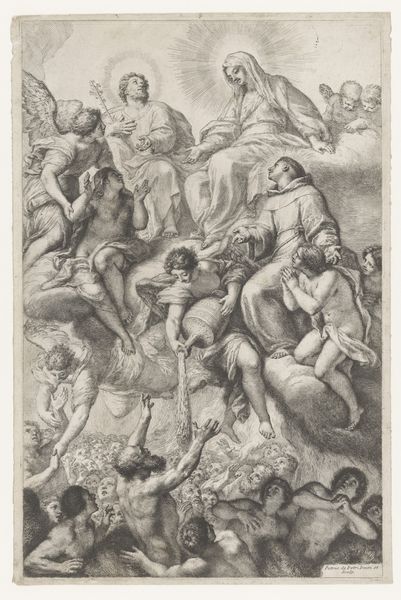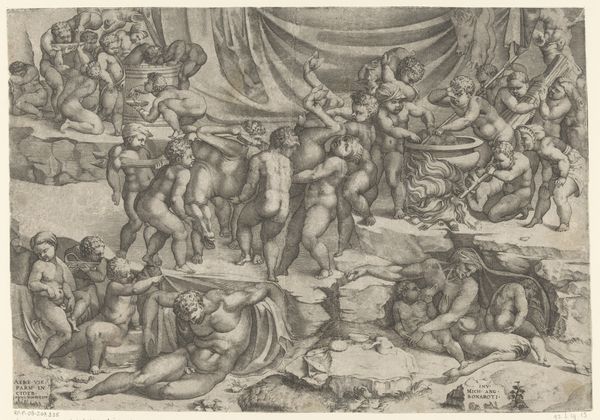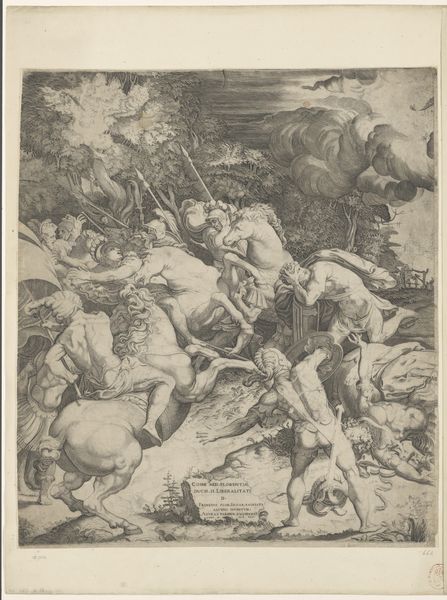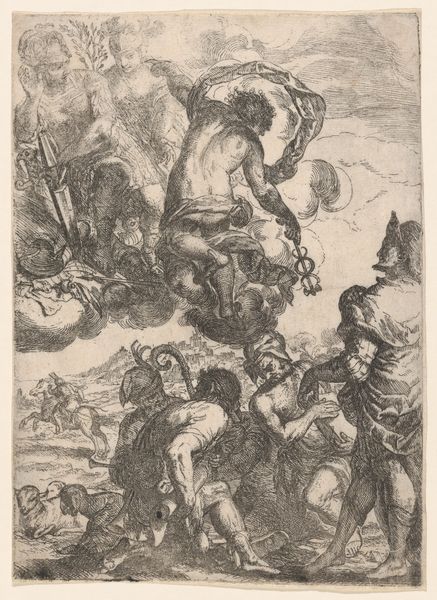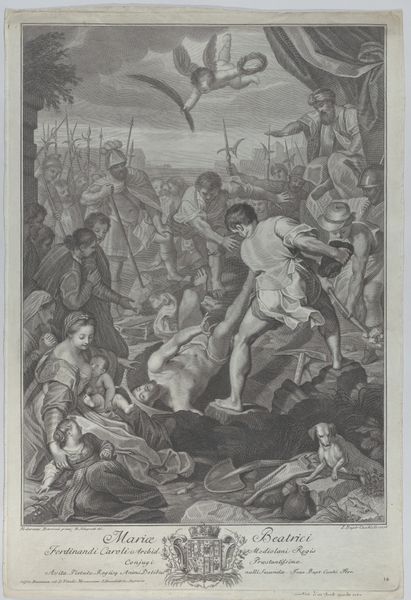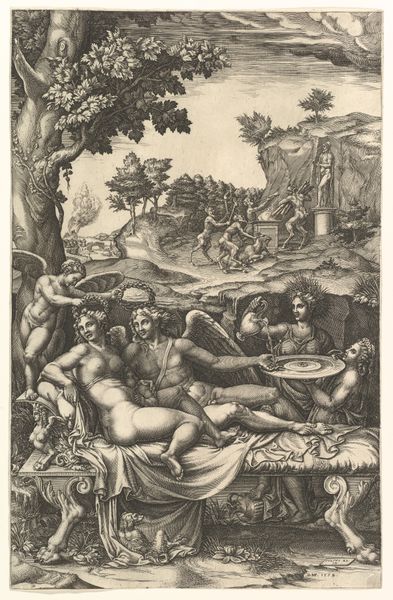
The conversion of Saul, who lies on the ground surrounded by horses and soldiers as Christ appears above him 1583
0:00
0:00
drawing, print, engraving
#
drawing
# print
#
mannerism
#
figuration
#
history-painting
#
engraving
Dimensions: Sheet (Trimmed): 20 7/8 × 13 15/16 in. (53 × 35.4 cm)
Copyright: Public Domain
Curator: Here we have Pieter Perret's "The Conversion of Saul," an engraving dating back to 1583, now residing at The Metropolitan Museum of Art. Editor: My eyes are immediately drawn to the chaos. Figures sprawling, horses rearing...and above it all, this brilliant, almost blinding light. It's… well, it’s a lot to take in. Curator: Indeed. The Mannerist style emphasizes drama and emotional intensity. Notice the contorted poses, the sheer density of figures. This scene depicts the biblical moment when Saul, later known as Paul, is struck down and converted to Christianity. Editor: It’s interesting how Christ is positioned. He’s radiating so intensely, he seems weightless—suspended almost outside the very laws of the heavy, earthbound scene below. Is that typical for art of the time? Curator: Not entirely atypical, but Perret certainly uses the composition to highlight the divine intervention. Consider how printmaking at the time facilitated the spread of such potent religious imagery, shaping beliefs and fueling the Counter-Reformation. The artwork becomes a tool for propagating faith. Editor: I hadn't really thought of it in the light, if you pardon the pun. Looking at the faces, there's fear, awe… but even a kind of surrender. I mean, how else do you react to a literal blinding light? It feels like I can't escape what is being put forth by the artist. Curator: The deliberate use of engraving allowed for detailed, reproducible images. These circulated widely. Prints such as this not only documented biblical events, they were crucial in the dissemination of doctrine and reinforcing faith. They became part of a very public visual sphere. Editor: Thinking of it like that makes it seem like, on one level, there's very little of the personal. You're meant to simply follow along. Curator: And on another level, Perret's interpretation allows for personal reflection and devotion. This reminds us art often lives at a complex nexus of personal creativity and political realities. Editor: This reminds me that one person's moment of blinding truth is a historical moment of art meeting purpose and faith becoming the language that the artwork translates so successfully.
Comments
No comments
Be the first to comment and join the conversation on the ultimate creative platform.
